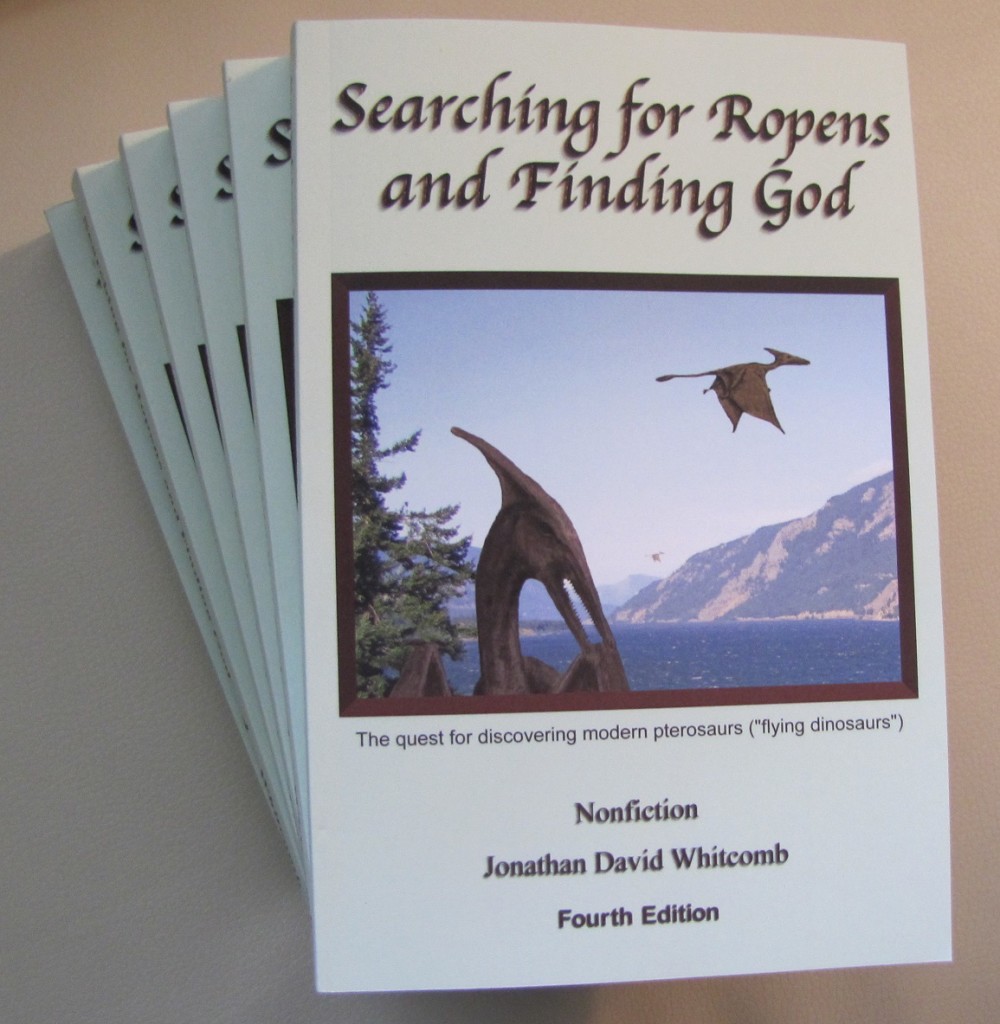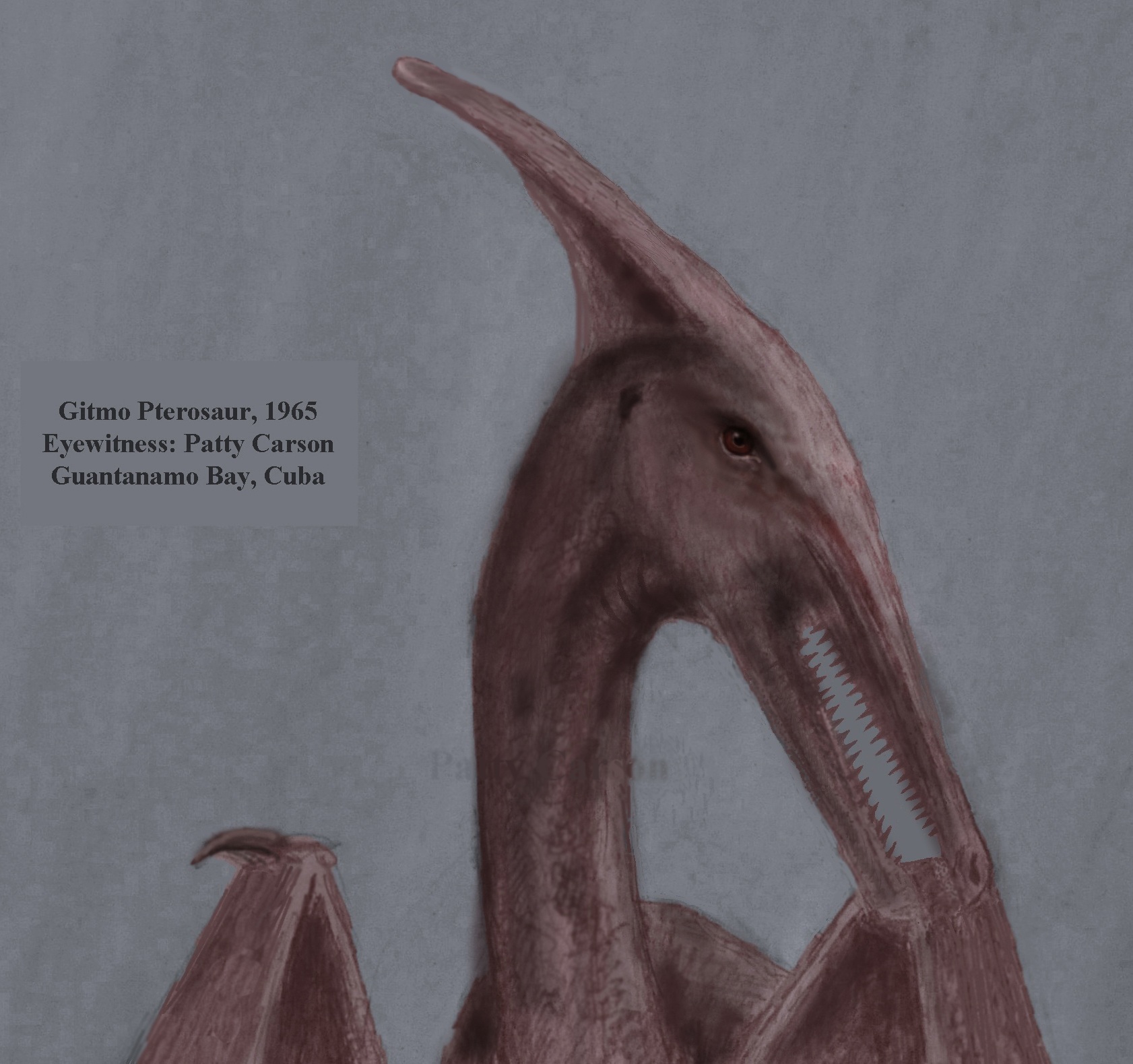Wikipedia may not have the best reputation among all cryptozoologists, but here is what it says about the “mythical dragon-like beast” that is reported in Maryland and is called the Snallygaster:
. . . half-reptile, half-bird with a metallic beak lined with razor-sharp teeth, occasionally with octopus-like tentacles. It swoops silently from the sky to pick up and carry off its victims.
Now consider what Wikipedia says about the Jersey Devil:
. . . flying biped with hooves . . . a kangaroo-like creature with the head of a goat, leathery bat-like wings, horns, small arms with clawed hands, cloven hooves and a forked tail.
Those assortments of descriptions probably come from a variety of sources rather than from direct eyewitness testimonies in which each characteristic is reported by individual persons. I suggest we take common points more seriously than the overall descriptions.
Half-reptile, half-bird, with leathery bat-like wings
What do the above two Wikipedia descriptions have in common? A flying creature with wings like a bat but much bigger than a bat—that’s part of the description of the Jersey Devil, and that’s not far different from the “half-reptile, half-bird” part of the description of the Snallygaster. The largest mythological beast with giant bat-wings—that would be a flying dragon, and that creature of legends is associated with reptiles.
I suggest that one type of cryptid, as a real animal, is responsible for at least some of the reports from both Maryland and New Jersey: a large unidentified flying creature, regardless of labels. I also suggest that not all descriptions of “monsters” reported in those two states are far from the truth regarding the true characteristics of these winged animals. Call them what you will, I consider them living pterosaurs, even worthy of the label “ropen.”
Leathery or covered with hair?
One paleontologist once ridiculed eyewitness reports of large flying creatures with leathery wings. He did so by insisting that real pterosaurs had wings with hair, unlike leather. He missed the point. Eyewitnesses use the word “leathery” as a general description of the featherless wings. Of course if somebody were able to get close to a sleeping ropen, fine hair might very well be observed on the wings. But people rarely get anything like such a close view, so the hair is not visible.
Look at people on an American beach in the summer. From a distance, most of them will appear to have no hair on their arms. Of course none of us would describe human skin as leather, but that’s because we know human skin very well. We do not know much about these unidentified flying creatures, so it’s the general appearance that is meant by an eyewitness who reports “leathery wings” on an apparent pterosaur seen from a distance.
Getting carried away?
What I now relate is not something I found on the internet. I myself, in 2004, traveled to Papua New Guinea and took an interpreter with me to Umboi Island. There I interviewed, face-to-face, Michael of Opai Village. That old man himself told me about what he saw with his own eyes in Gomlongon Village one night, when he was young: The glowing ropen came down to the grave of a recently-buried man. In the morning light everybody saw the open grave. The dead man’s body was gone.
That does not mean that a flying creature with “octopus-like tentacles” carries away anybody who stops to change a tire on Highway 70 in Maryland; but maybe, just maybe, not everything on Wikipedia is entirely fictional when a cryptid is labeled “mythical.”
Please get in touch with Whitcomb if you have anything to report
###
.
This pertains only to a narrow range of cases in which a small child goes missing in or near a wilderness area in North America. In the book by Paulides, 219 cases have an age for the missing person, and 21 of those are of two-year-olds. That seems to me to be a large portion—10%—for such a narrow age range, for ages of the victims go up to over seventy years old, and every age of childhood is represented.
Pterodactyl attacks in Yosemite?
These weird disappearances are not confined to Yosemite, nor even to the United States. Several factors do seem to tie together cases that are separated by long distances and sometimes separated by decades. To understand what may be happening in Yosemite National Park, we need to see in a broader sense. Look to Canada and to Mexico.
.

Nonfiction Searching for Ropens and Finding God in paperback
.



